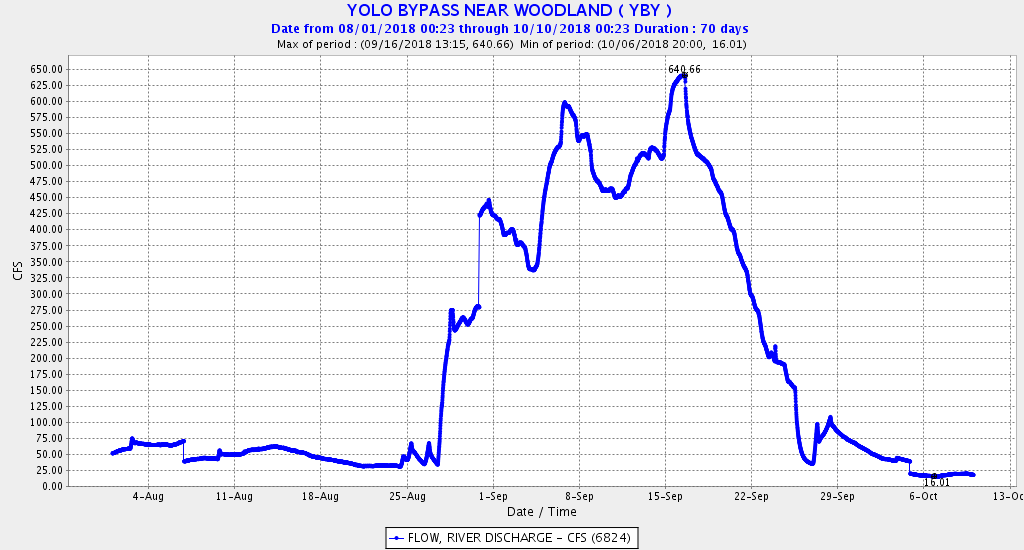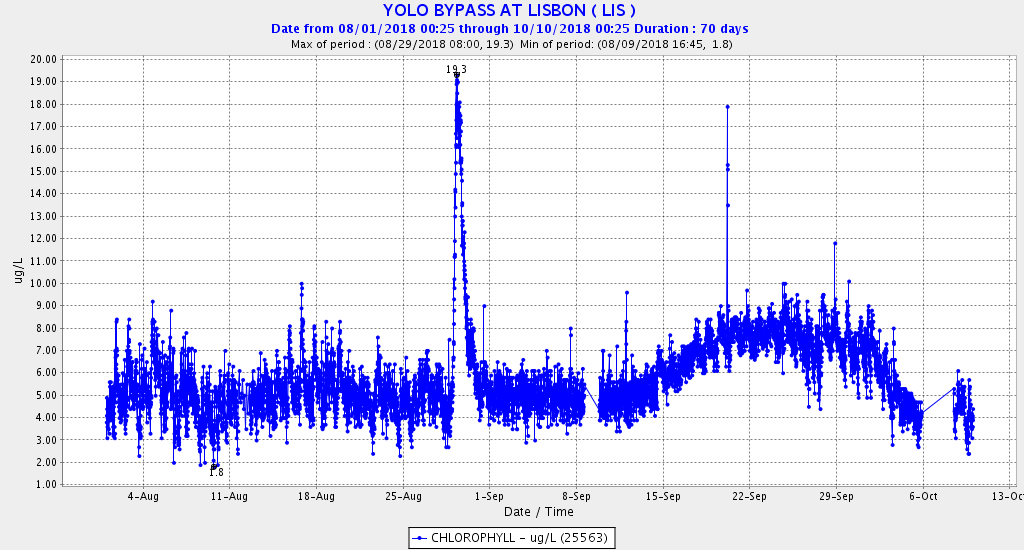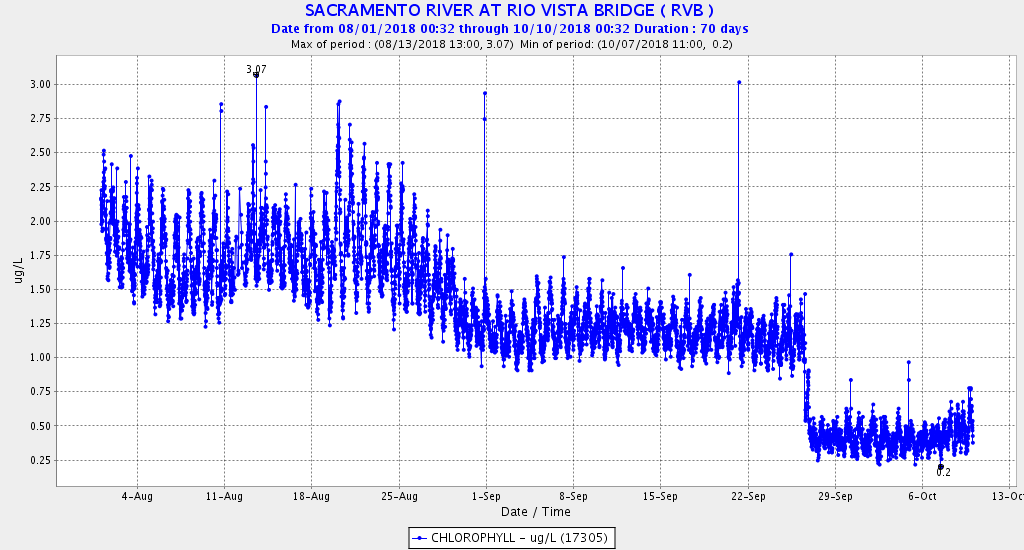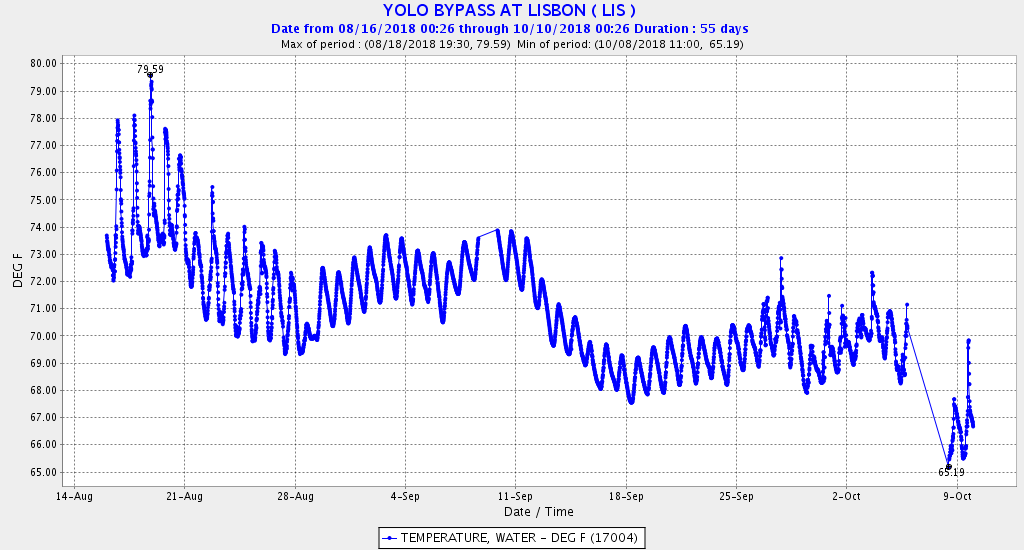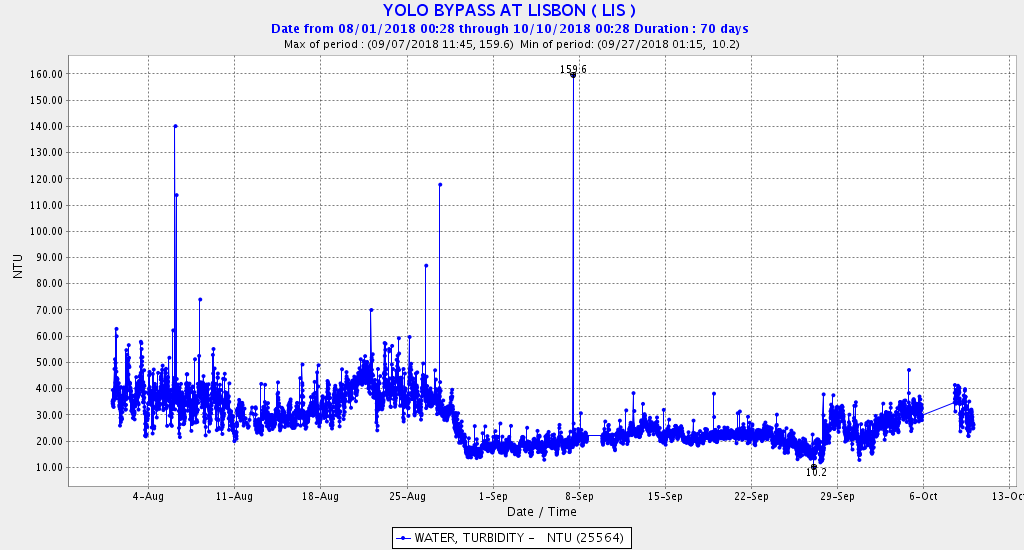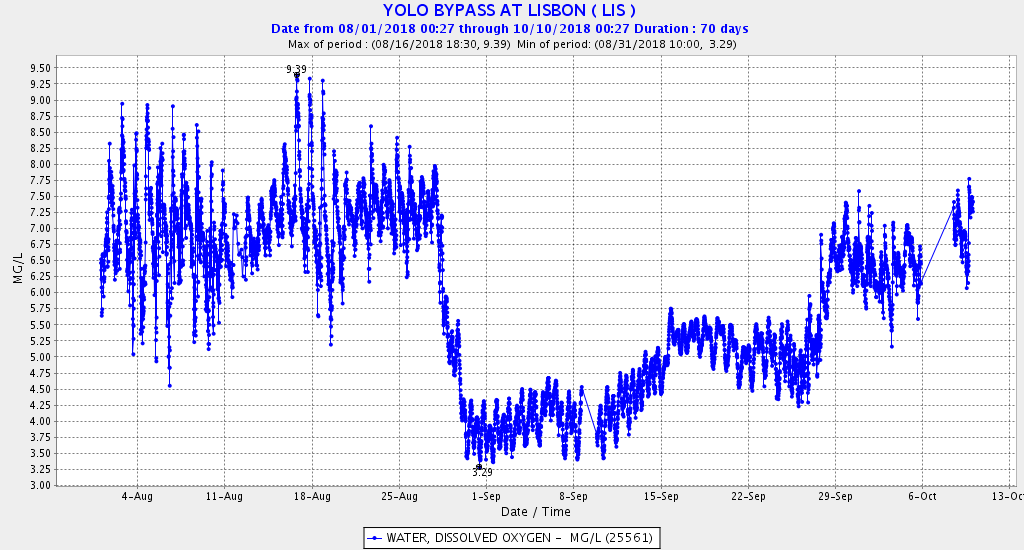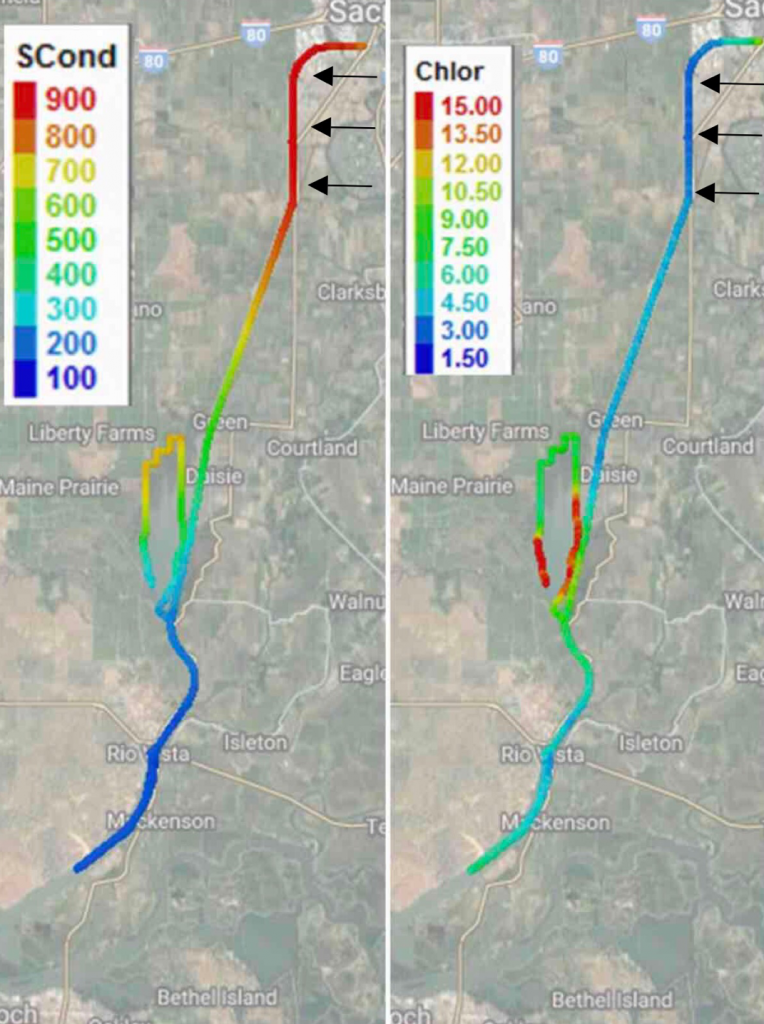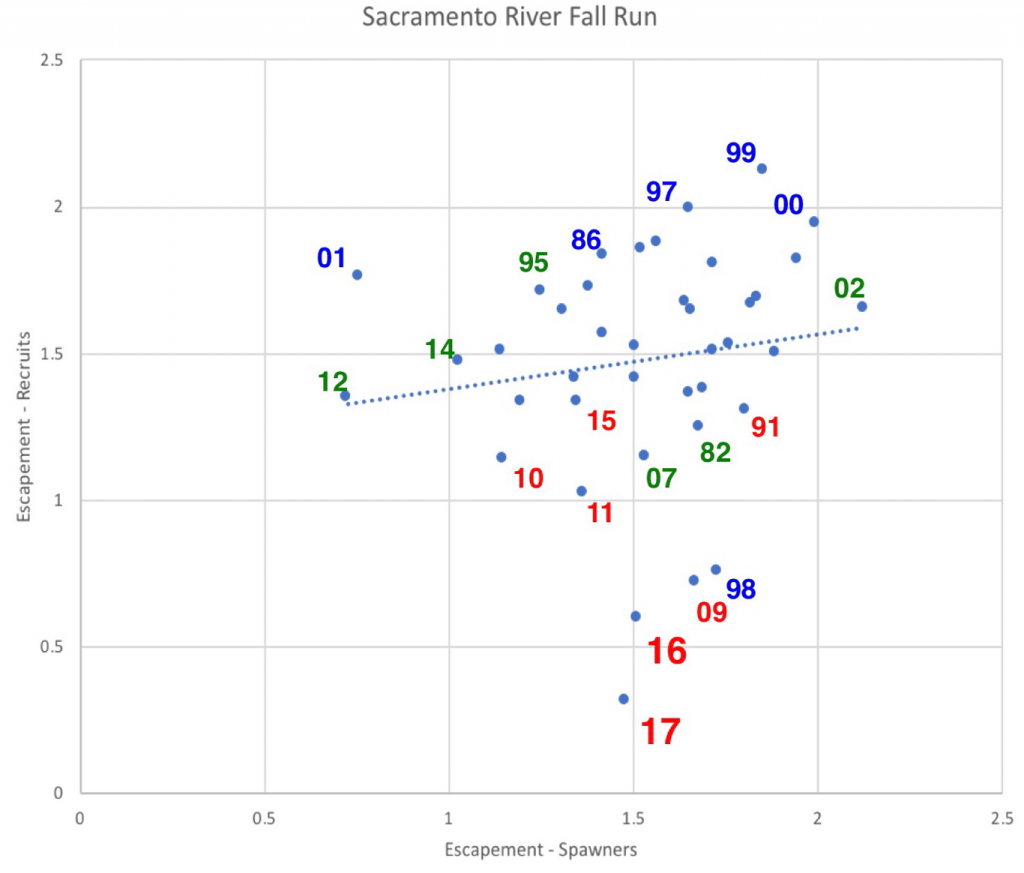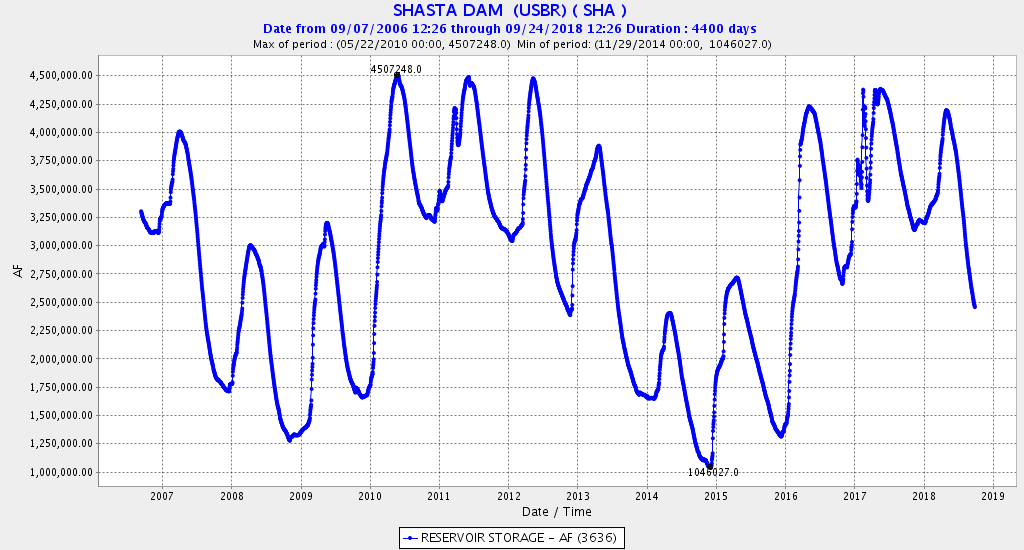It is well known that juvenile winter-run salmon migrate downstream to the Delta from their upper Sacramento River rearing area near Redding/Red Bluff with the first fall-winter flow pulses.1 Protection of this critical migration of winter-run has been recommended in recent Delta proceedings. In the WaterFix petitions process at the State Water Resources Control Board, such protection is referred to as “pulse protection.” So based on the importance of protecting winter-run during this key life-history stage, one would think such protection would have been applied in the fall of our most recent wet year 2017 and below-normal 2018. A quick check of the facts indicates otherwise.
In 2017, the initial pulse of juvenile winter-run salmon passed Red Bluff (rivermile 240) during September and October, prior to any flow pulses (Figure 1). The first major pulses of flow occurred in the latter half of November 2017. A migration spike of winter-run-sized smolts at Knights Landing screw traps (rivermile 90) did occur during the flow pulse (Figures 1 and 2). Instead of protecting these winter run as they were entering the Delta, south Delta exports were increased to take advantage of the available inflow (Figure 3). The increase occurred with the Delta Cross Channel partially open (Figure 4), increasing the risks of migrating salmon to south Delta exports. Other than a four-day pulse, Delta outflow generally declined before and after the flow pulse (Figure 5). Salinity in the lower Sacramento and San Joaquin Delta channel generally increased with the higher exports and lower outflows (Figures 6 and 7).
In 2018, the initial pulse of juvenile winter-run passed Red Bluff in September and October prior to flow pulses (Figure 7). The first major pulse of flow occurred at the end of November. A migration spike of winter-run-sized smolts at Knights Landing screw traps occurred during this flow pulse (Figures 7 and 8). Instead of protecting these juvenile winter run as they were entering the Delta, south Delta exports were increased to take advantage of the available inflow, with nearly two-thirds of the Delta inflow being exported (Figure 9).
The lack of protection is likely a consequence of the young salmon not showing up in salvage (Figure 2). For me, the high risk factors are clear.
- The lack of salvage simply indicates that few of the migrating salmon survive upon entering the Delta under high exports. High late-November and early-December south Delta exports are a high risk to the juvenile winter-run survival. Traditional high December exports of up to 65% of Delta inflow allowed under D1641 water quality standards are a major risk factor for winter-run salmon that must be changed.
- Declining flows below Keswick Dam (rivermile 300) during the fall, combined with the lack of flow pulses, are also a real concern. Juvenile salmon that pass Red Bluff (river mile 240) in September and October are sustained in low flow conditions for nearly 200 miles of modified river channel until the first rains in late November or early December. And the spawning reach directly downstream of Keswick gets no added flow even when it rains, because inflows to Shasta Reservoir are all captured.
For additional information, see agency discussions and data presentations in: http://www.westcoast.fisheries.noaa.gov/publications/Central_Valley/Water%20Operations/Delta%20Operations%20for%20Salmonids%20and%20Sturgeon/DOSS%20WY%202018/winter-run_juvenile_production_estimate__jpe__for_brood_year_2017_-_january_29__2018__1_.pdf

Figure 1. Juvenile winter-run salmon estimated passage and stream flow at Red Bluff (rivermile 240) from late summer 2017 to June 2018.

Figure 2. Lower Sacramento River screw trap collections at Knights Landing (rm 90) since August 2017 along with flow, turbidity, and water temperature. Note late November catch event during flow pulse.

Figure 3. South Delta exports in fall 2017. Note peak exports mid-November through early December – total 10,000-11,000 cfs (22,000 acre-ft per day). Chinook salvage is shown as zero.

Figure 4. Flow through Delta Cross Channel August through December 2017. Note sporadic opening late September through November 2017, and closure at end of November.
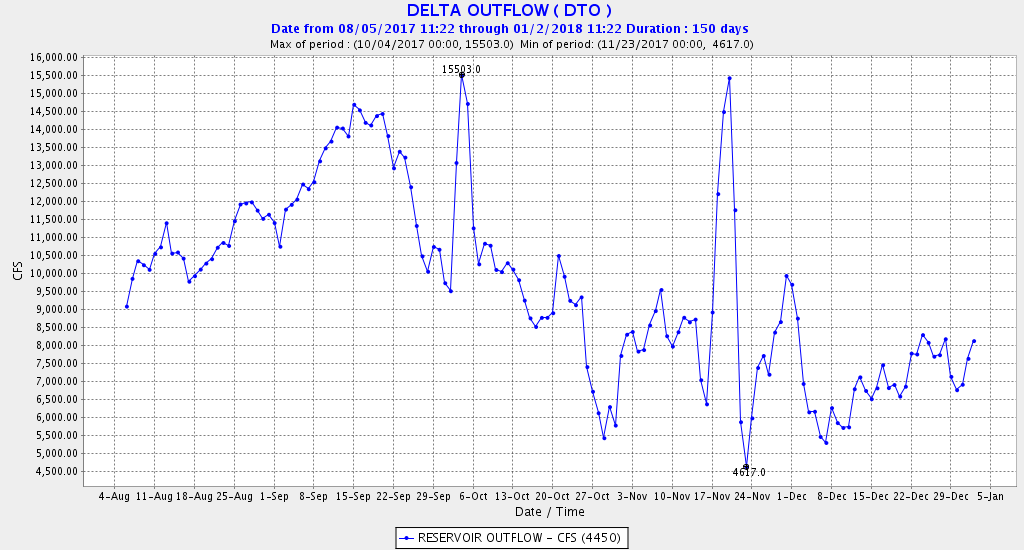
Figure 5. Delta outflow August through December 2017.
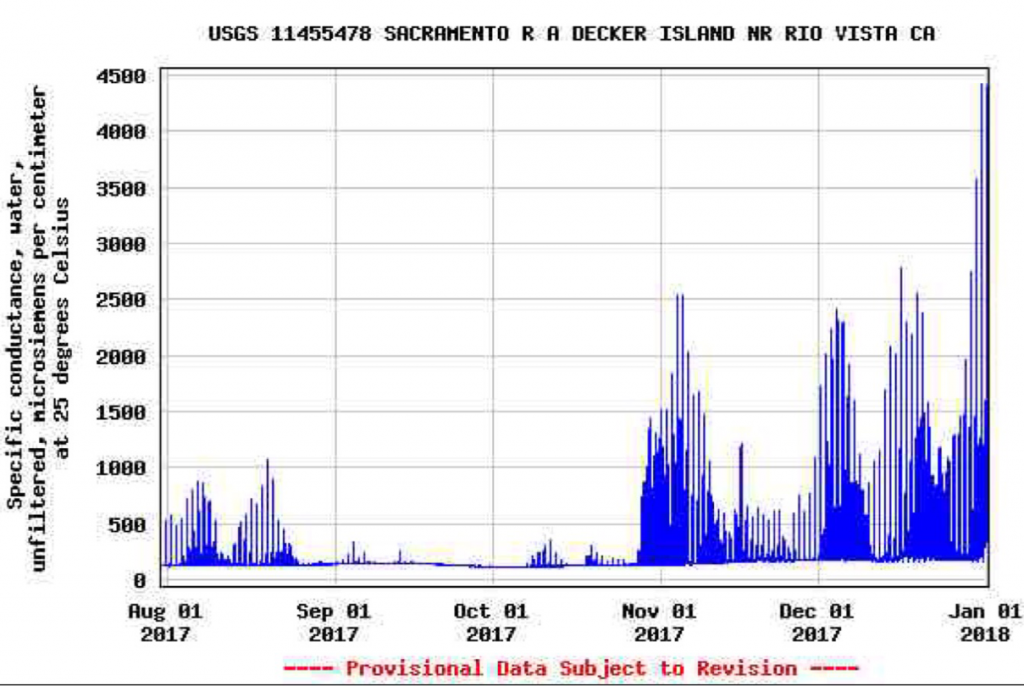
Figure 6. Salinity (EC) near Rio Vista on lower Sacramento River channel in the Delta, August through December 2017.
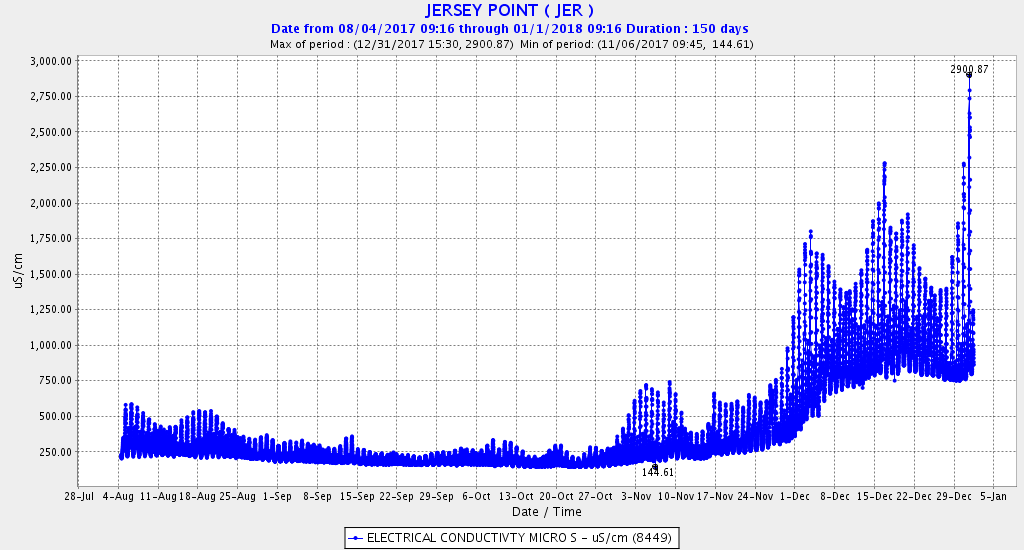
Figure 7. Salinity (EC) near Jersey Pt on lower San Joaquin River channel in the Delta, August through December 2017.

Figure 8. Juvenile winter-run salmon estimated passage and stream flow at Red Bluff (rm 240) from late summer 2017 to June 2018.

Figure 9. Juvenile winter-run salmon estimated passage at Knights Landing (rivermile 90) and stream flow at Wilkins Slough (rivermile 125) from late summer to fall 2018. Note early December pulse of fish, flow, and turbidity.

Figure 10. Export rates from two south Delta pumping plants (Tracy TRP and Banks HRO) summer and fall 2018.

Figure 11. Lower Sacramento River flow at Freeport (FPT, rm 55) and Delta outflow (DTO) summer and fall 2018.

